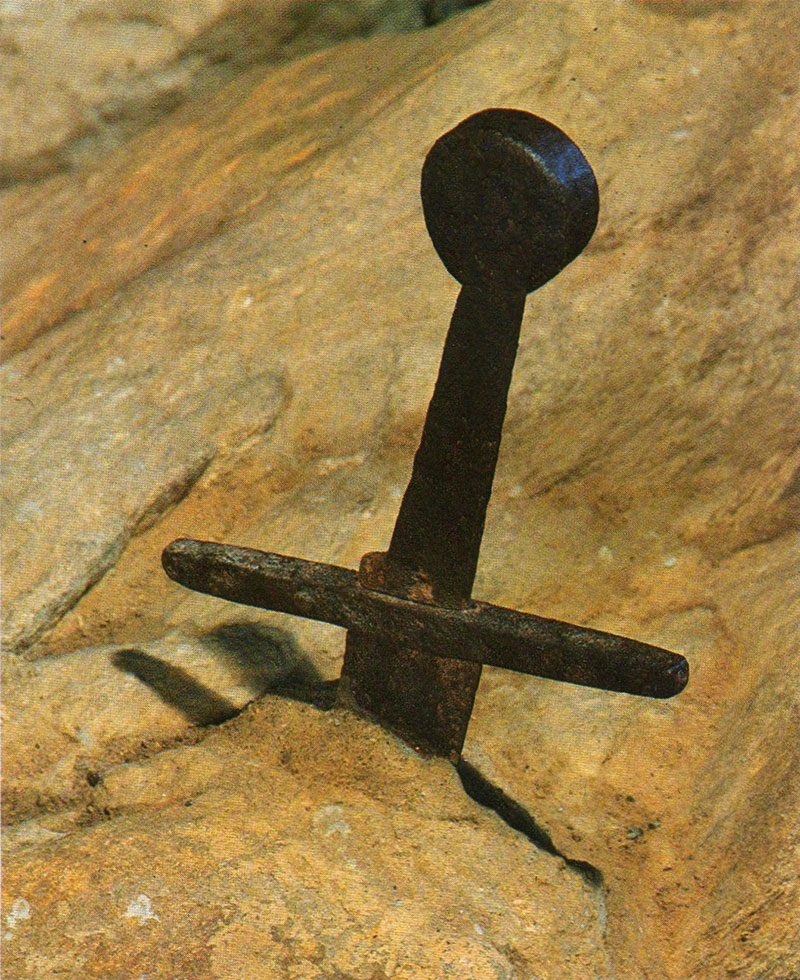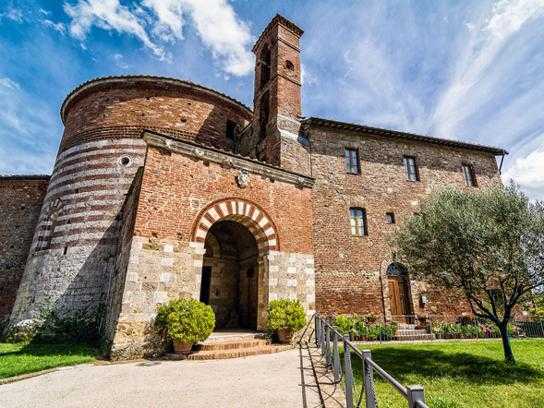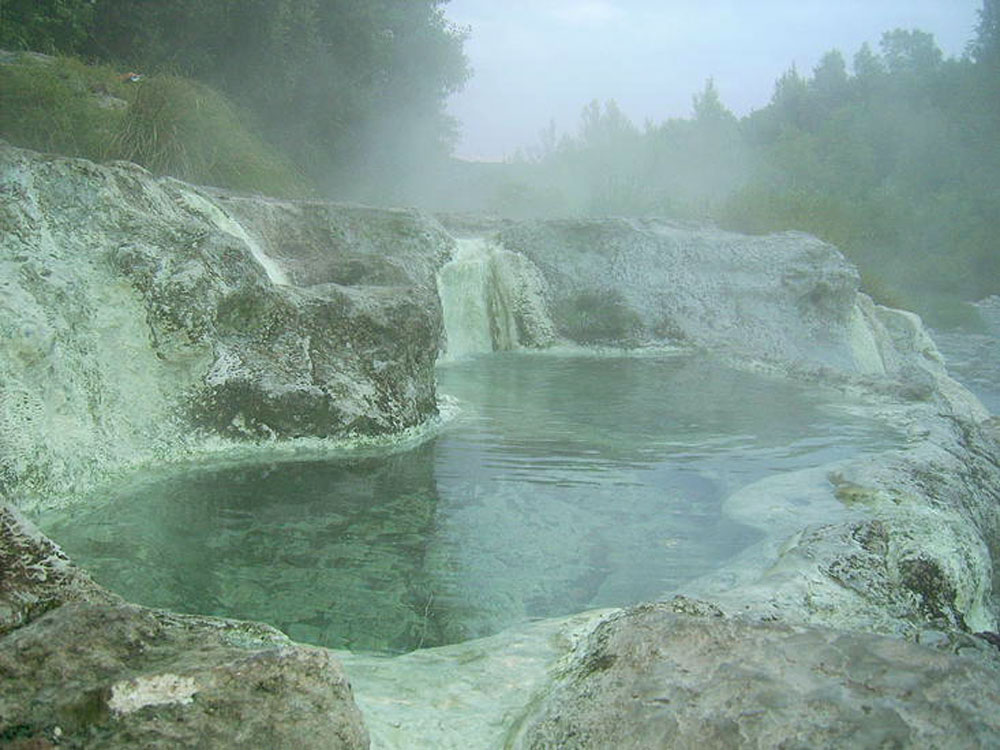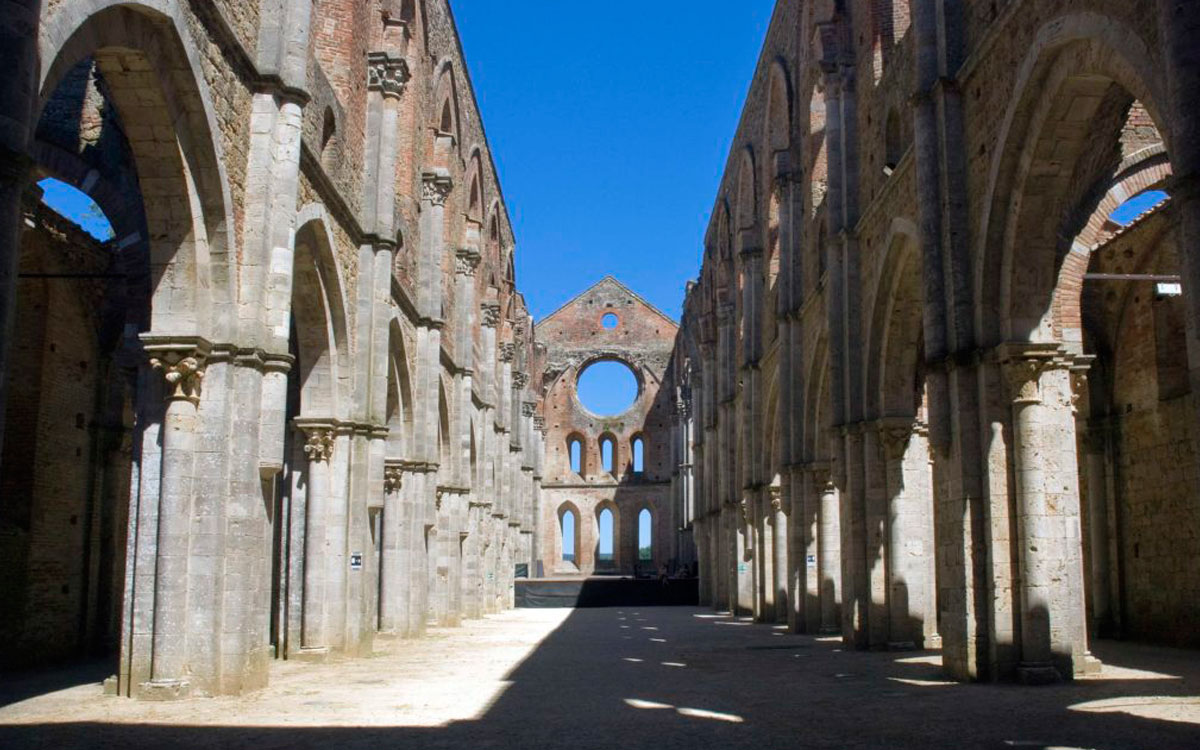A "magic" day in timeless places.
A hundred kilometers from the Argentario, a journey from the earth to the moon!

The Abbey of San Galgano
The Abbey of San Galgano is easily reachable from the Grosseto-Siena highway.
It is located in the municipality of Chiusdino, a small town of Lombard origin lying on a summit of the Metalliferous Hills.
It was built between 1220 and 1268 by the order of the Cistercian monks.
After a hundred years of great splendor, it followed the slow decline and the consequent desecration.
A great energy is felt in this place, stopped in an indefinite time.
The lack of the roof makes the great Abbey of San Galgano a unique construction, a huge window wide open to the sky. The interior of the church is also without the floor, replaced by beaten earth which in spring turns into a grassy mantle, making it even more "mystical".
The most known cause to explain the lack of the roof, wants that in 1500 the abbey's covering lead was sold to repay the monks' debts.
But recently, the Accademia San Galgano, has denied this version of the facts by publishing the text of a historical document:
"The roof of the abbey church, which was made of wooden trabeations and bricks, actually collapsed due to a progressive weakening of the structures - repeatedly denounced during the course of the 17th and 18th centuries - which did not support the collapse on of them from the bell tower, which occurred on the morning of 22 January 1786 “(State Archive of Florence, Affairs of the ecclesiastical heritage of Volterra)
The Abbey of San Galgano is open every day from 9:00 am to sunset. The ticket price is € 3.50.

The sword in the Stone
It will be difficult for you to leave this magical place but there is one that is equally fascinating.
Not far from the Abbey an uphill path will lead you to the Hermitage of Montesiepi in less than 5 minutes.
Inside there is a stone, with a sword inside, just like the mythical Excalibur.
The Hermitage of Montesiepi preserves this relic and its mystery. In the chapel, which is also called the Rotunda because of its circular shape, protected by a glass case, is the mythical sword in the rock!
The shrine protects the sword from human stupidity: a few years ago a "citrullo" (blockhead !) believing to be the incarnation of King Arthur, tried to extract the sword by breaking it at the height of the hilt!
The Hermitage of Montesiepi is open every day from 9:00 am until sunset and free entry; Holy Mass is held every Sunday morning at 11:30.
Vi sarà difficile lasciare questo luogo magico ma ve ne attende uno altrettanto affascinante.

Who planted the sword in the stone
Galgano Guidotti was born in Chiusdino around 1150, into an aristocratic family.
Galgano was a violent young man, intent on a life of fun and pleasure, until he changed his behavior following two apparitions of Saint Michael the Archangel, who wanted to turn him into a Knight of God. He was the protagonist of two successive visions in which the archangel Michele showed him his life path.
From this moment began a process of conversion of the young man, which culminated during a journey, where Galgano, entrusting himself to God and his horse, was led to the hill of Montesiepi. Here the horse knelt in reverence at San Michele, Galgano went ashore and submitted and converted to the words spoken by the Archangel.
He abandoned the sword and planted it in the rock making it become a cross, which, in doing so, from being an instrument of death became a symbol of peace and redemption. The news was very loud and his example was followed by many. A small community of believers came to be created forerunner of the monastic community. Montesiepi became a place of pilgrimage, many faithful wished to talk to the saint or to receive miracles and healings.
Galgano lived the last years of his life as a hermit in a hut, built by him near the rock into which he had driven his sword.
The Saint's death took place on November 30th 1181, Galgano was found kneeling before his sword, in the act of prayer. The chapel was built between 1181 and 1185 on the hill where Galgano retired to a hermit's life.
Four years after his death, Pope Lucius III proclaimed him a saint.

The "Mulino bianco" (white mill)
Not far from San Galgano, in Luriano, there is the Mulino delle Pile, a famous testimonial of the "Mulino Bianco" of Barilla. It was built in the early 1200s by the monks of the nearby Abbey of Serena. The peculiarity of this mill was its use: not only was it used to grind wheat, but it was also used to work the fabrics and make them more consistent. The Mulino delle Pile, takes its name from the stone vessels called "piles" in which the water wheel operated the mechanism that struck the fabrics immersed in a solution used to felting them.
Today it is a farm that stretches for 12 hectares in the Natural Park of Val di Merse.
The structure, beautiful and imposing, is not as white as we are used to seeing it both on the logo and in the TV commercials but it is totally in stone.
The idea of the "white mill" came in 1989 to Armando Testa, founder of one of the main Italian advertising agencies. Thus began the hunt for a physical and real place that was the same as the imaginary one. After much research, this Sienese structure was chosen, which was then disused and poorly reduced. The tower, for example, was in ruins and was restored with plasterboard to allow shooting.
It is the first case in Italy where a physical place is chosen to promote a product.

The free thermal baths of Petriolo
One last tip to end an unforgettable day ... while you're close to it!
On the way back, on the Siena-Grosseto highway, you will find the Petriolo Free Baths, right under the bridge over the Farma. Currently the tanks formed along the river catch the excess water not used by the very recent paid spa, built a few meters away.
The temperature of the hot water, at the source, is 43 degrees Celsius. Its unpleasant smell is due to the strong presence of sulfur, which is very useful in mitigating and healing various ailments.
It is also possible to dive and swim in the nearby stream enjoying the benefits of the frigidarium-calidarium effect obtained by passing in sequence from the warm waters of the thermal spring to the cold ones of the Farma river.







